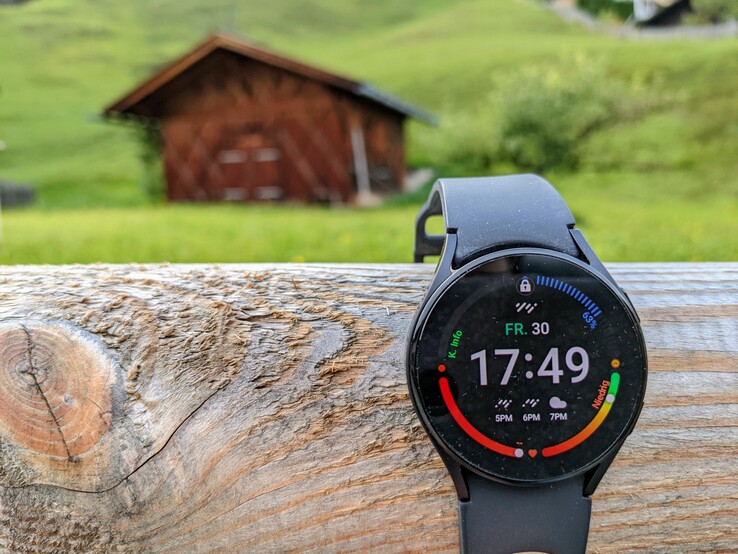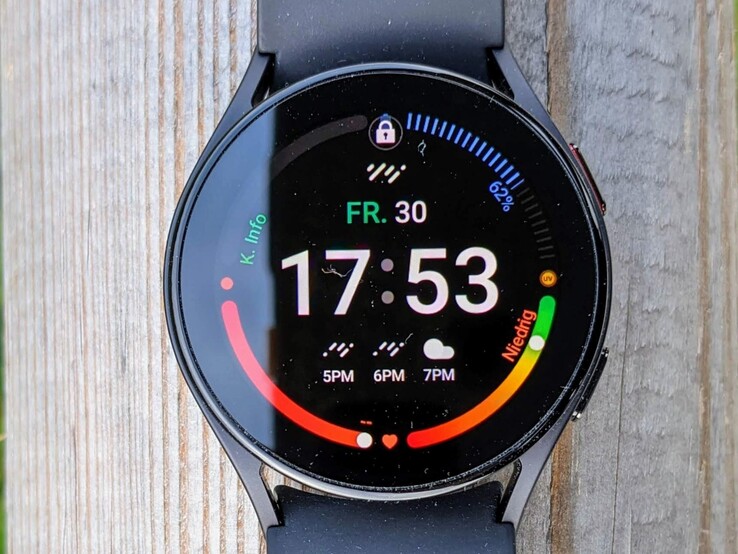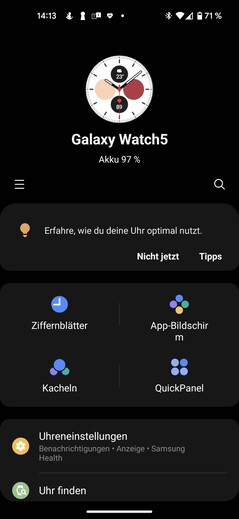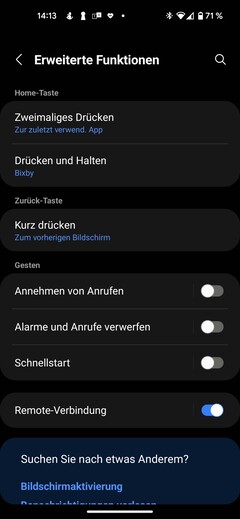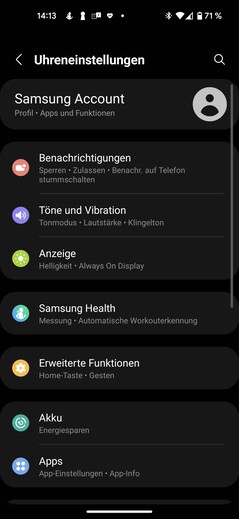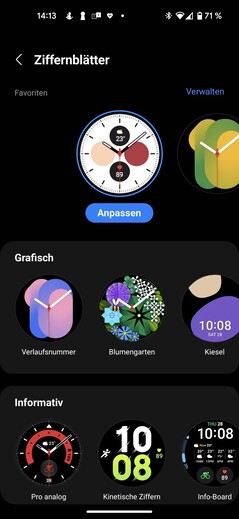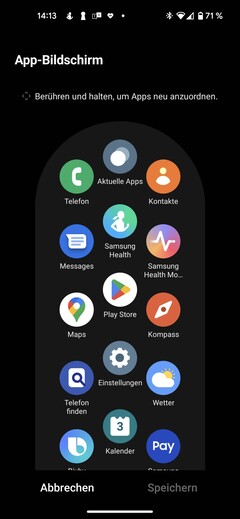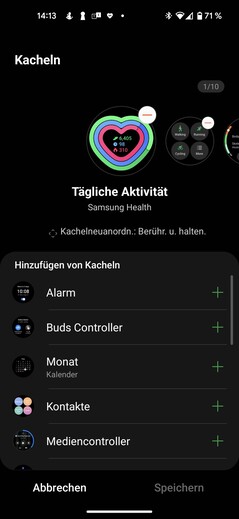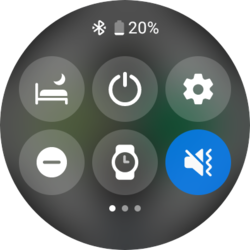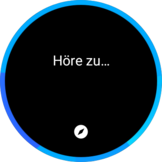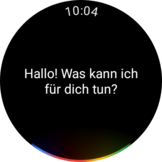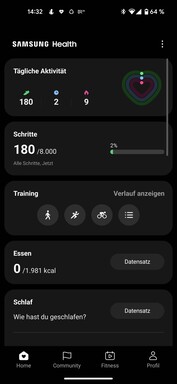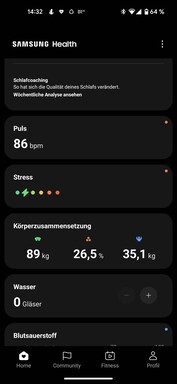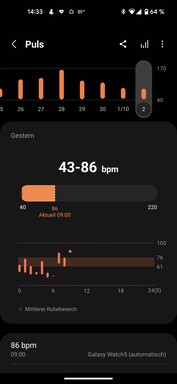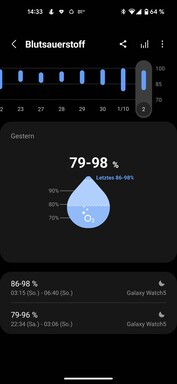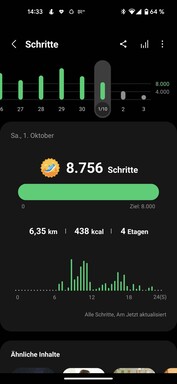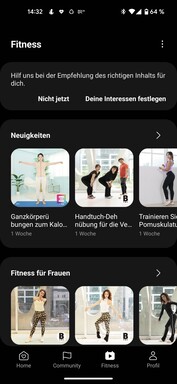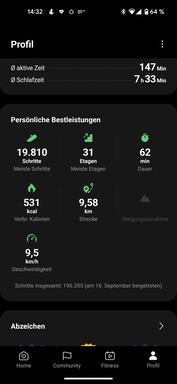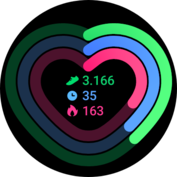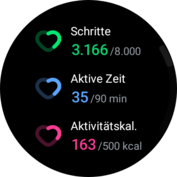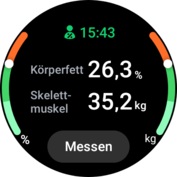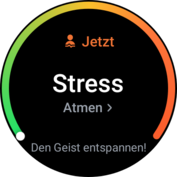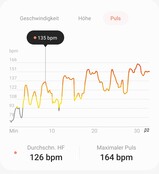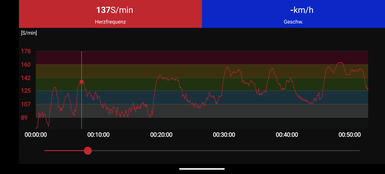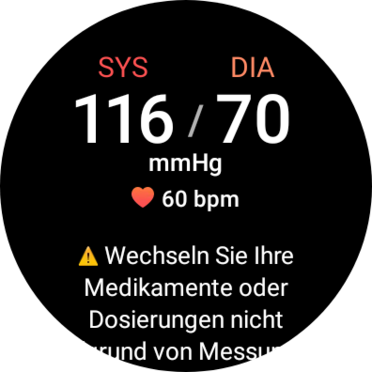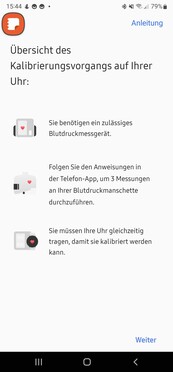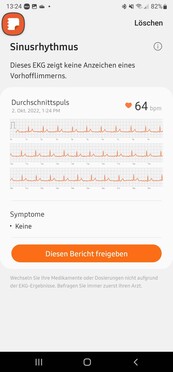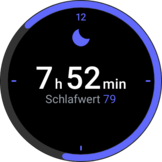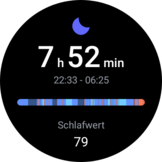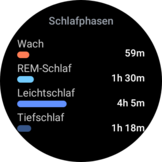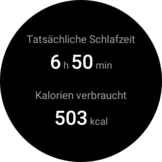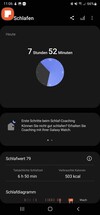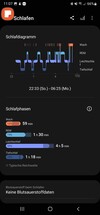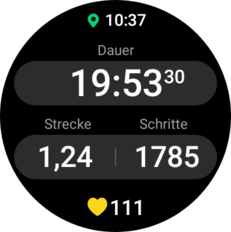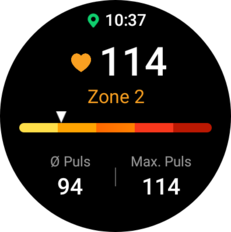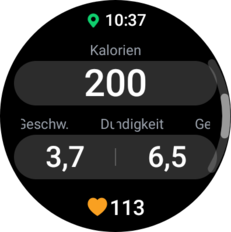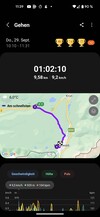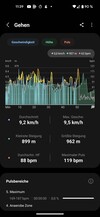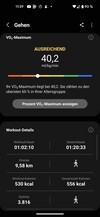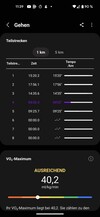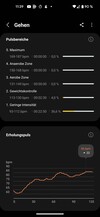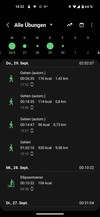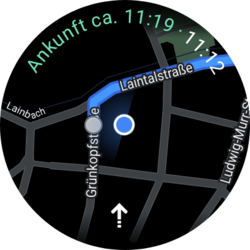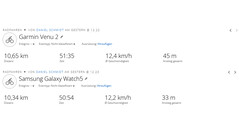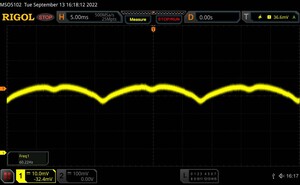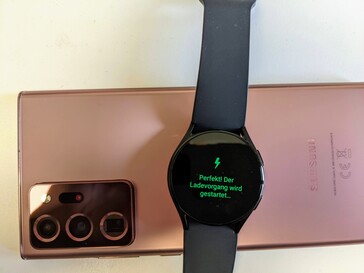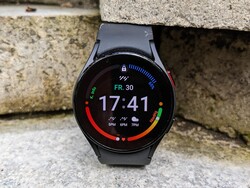Samsung Galaxy Watch5 Review - If only it weren't for the battery
With the Galaxy Watch5 Pro, Samsung is building a new high-end model in the Watch series, although the normal Watch5 is still available in two different sizes: the smallest of these Watch5 form factors has a case diameter of 40 millimeters (~1.6 in), while the big one is 44 millimeters (~1.7 in). Both are also optionally available in an LTE wireless version. Three colors are available for the case: silver and black are available for both sizes, while the small one can also be ordered in "Pink Gold" and the large one in "Sapphire". In the Samsung online shop, you can also choose between 14 different straps with different clasp mechanisms. Our test unit is the 40 millimeter version with a black case, black sports strap and no LTE connection.
Case and features – Galaxy Watch5 with aluminum body
Unlike the Watch5 Pro, the case of the Samsung Galaxy Watch5 is made of aluminum. The sides are brushed (and therefore matte), while the surfaces on the sides to which the straps are attached are glossy. There are two buttons on the right side with a microphone in the middle. A second microphone is located on the front of the case, above the ribbon connector. Samsung has placed the speaker on the left side of the case.
The 1.19-inch display is protected by sapphire crystal, but the case - unlike the Watch5 Pro - does not offer any additional shielding by protruding slightly above the screen. Samsung has also put in a digital bezel on the normal Watch5, more specifically an area with sensors between the display and the edge of the housing. The Sport Band is made of fluorocarbon rubber and is 20 millimeters (~0.8 in) wide. The straps are identical to those of the Watch4 and are thus interchangeable. Thanks to small levers on the spring rods, this change can also be made without any tools. Our test device weighs 50 grams (1.8 oz) with the strap, with the case alone weighing 28 grams (1 oz).
Setup and operation - not possible with iOS devices
To set up the Samsung Galaxy Watch5, you will need to install the Galaxy Wear app on your smartphone. An Android smartphone with at least Android 8 is required, while connection with iOS devices is not possible. Because the Wear app is intended to be used by all Samsung wearables, it needs a plug-in once the watch is recognized. After that, setting up the smartwatch is very simple: after permissions for notifications, location, etc. have been granted, various settings can be changed on the watch via the app. After setup, various changes and adjustments to the settings can also be accessed directly on the smartwatch itself.
Even after setup is finished, the Wear app needs to be used in order to customize the watch. Clock faces can be changed or the order and content of the tiles can be adjusted there. The settings for the screen, sounds, apps and notifications can also be changed here, while other services such as Samsung Pay can be set up and other apps downloaded from the Play Store as well. The Wear app isn't where the exercise settings and your exercise data overview live, though; for that, you need to switch to the Samsung Health app.
The watch is operated through the 1.19-inch touchscreen, as well as using two buttons and a digital bezel. However, the bezel does not rotate; instead, there is a sensor installed in the area between the display and the edge of the case. Running a finger over this ring scrolls through the watch's menus.
The function of the buttons can be customized in the Wear app. Aside from single presses, double and long presses are recognized by the software as well. In the factory settings, a simple press on the top button always leads back to the home screen. A long press opens the Bixby voice assistant while a double press opens the last used app. Pressing the bottom button takes you one step back in every menu or app by default.
From the home screen, a swipe from top to bottom leads to some settings, called the QuickPanel. Similar to Android smartphones, here you have quick access to the brightness, the always-on display, Bluetooth and WLAN connections, the energy saving mode, the flashlight function and various modes such as airplane mode, cinema mode, do not disturb mode or bedtime mode. The arrangement of the keys can be customized.
A swipe from left to right leads to the notifications. A notification is displayed for each tile, and clicking on the message opens more details. An orange dot on the home screen indicates unread messages. Swiping from bottom to top opens the app menu with all installed applications. The arrangement of the programs can be adjusted on the watch as well as in the smartphone app. A swipe from the right leads to tiles that represent key information, and the arrangement and content of these tiles can be changed both on the watch and in the app. In the factory settings, the Watch5 gives an overview of daily activity, the workout menu, body composition, sleep values, the weather, the calendar, blood pressure, ECG, pulse and stress level. Pressing on each tile opens a submenu with more details.
Telephony and notifications - lots of ways to respond to messages with the Watch5
The Galaxy Watch5 is excellent at dealing with both phone calls and notifications. If a paired smartphone is within Bluetooth range, incoming calls are displayed on the smartwatch and can also be answered directly there, thanks to the built-in microphones and speakers. The voice quality is good, with the speaker being loud enough in quieter surroundings and not making any annoying noises.
The Galaxy Watch5 is just as effective when it comes to notifications. In the Wear app you can choose which apps can send notifications to the watch; the clock also displays long messages such as emails in full, emojis and images are also displayed. You can also send answers directly with the watch, with various message options to choose from. Samsung gives a few standard short replies to choose from, but the wearer can also dictate answers that are converted to text, draw letters on the screen, or display a full QWERTY keyboard. Operation works very well on the 1.19-inch display, but we were more impressed by the larger display of the Watch5 Pro.
Voice assistant - Samsung's Bixby or Google Assistant
The Galaxy Watch5 supports voice assistants; since Samsung has installed both microphones and a speaker, voice output and inputs are both possible. Samsung's own assistant, Bixby, is installed on the watch by default, but Google Assistant can also be downloaded via the Play Store. Both assistants can be used simultaneously on the smartwatch.
Health and fitness - collected in the Samsung Health app
All collected health data is displayed in the Samsung Health app. The collected data for pulse, sleep data, workout data, ECG and blood pressure as well as body composition in terms of muscle mass, fat and water appear on the app's home screen. Each element is covered in more detail in a sub-menu: for example, pulse measurements for one day can be evaluated and compared with those of other days.
The app also offers its own tab for the Samsung community, where workout data can be compared with your friends. In the Fitness tab, Samsung lists various running and exercise plans that can be stored in the app. These are offers directly from Samsung Health, but third-party offers are also listed there. A weekly summary of active and sleep time appears under Profile, where personal bests are also listed.
A synchronization of workout data with Google Fit isn't possible without a third-party app. The data can however be shared with Strava and Technogym accounts.
Activity goals - Samsung measures body composition
The Galaxy Watch5 presents activity goals in the familiar circles, although Samsung makes them heart-shaped. They indicate steps taken, time in motion and calories burned. The target values can be adjusted as desired in the Health app. When sitting for a long time - at the desk, for example - the smartwatch reminds you to get up and move. It then suggests various stretching exercises, which can be followed via animated diagrams if desired.
In addition, the Galaxy Watch5 can measure stress levels, with increased stress prompting messages to reduce stress with breathing exercises. Samsung also tries to use the built-in BioActive sensor's data to measure body composition. With regular measurements, changes in the values can also be tracked.
Heart rate, heart rhythm and blood oxygen saturation
The Galaxy Watch5 impressed us across the board when it comes to measuring vital signs. We compared the smartwatch with some reference devices in order to determine the accuracy of the measured values.
To measure heart rate, we took the Watch5 on a bike ride and compared the values with those of the Polar H10 chest strap. The resting heart rate was identical in both devices, while the difference in the active pulse was only 0.35 percent on average when comparing three measurements.
We chose a Braun Pulse Oximeter 1 as a reference device for the classification of the blood oxygen measurement. The average of three measurements showed a difference of 2.36 percent, with the values of the smartwatch being below those of the pulse oximeter.
The Samsung Galaxy Watch5 can also measure ECG values, at least when it is paired with a Samsung smartphone and the watch has also been previously calibrated with an external device. The Braun ExacFit 5 Connect was used as a comparison device for this measurement, with the average deviation for the diastolic value over three measurements being just 0.31 percent, while the results for the systolic value differed by 4.57 percent.
Overall, the accuracy of the Samsung smartwatch is impressive. It is remarkable that the values of the Watch5 are much more precise than those of the Watch5 Pro, despite the fact that the same sensors are installed in each one, probably due to the different sizes of the devices and their location on the tester's arm.
Sleep tracking - snoring detection but no smart alarm clock
The Galaxy Watch5's sleep tracking is extensive. The watch collects data about the duration of sleep and the different sleep phases, distinguishing between REM sleep, light sleep and deep sleep. Unlike many other manufacturers, the Samsung Smartwatch also shows details about the previous night's sleep directly on the device.
The Health app's display is even more extensive: the total sleep times are given as well as the times spent in each individual sleep phases. The data is also displayed graphically. The previous night's data can also be compared to other nights in order to examine trends. Samsung also offers sleep coaching to improve sleep quality if the watch is worn for at least seven nights in a row.
In conjunction with a smartphone, the app even offers snoring detection. What is missing, however, is a smart alarm clock that adjusts the wake-up time to the corresponding sleep phase.
Workout recording - the Galaxy Watch5 tracks automatically
The Samsung Galaxy Watch5 tracks a variety of workouts. Thanks to the built-in satellite connection, there is no need to be connected to the smartphone. The watch also automatically recognizes some exercises, such as walking or cycling. After ten minutes of movement, the watch indicates that it has recognized and recorded a workout, and the ten minutes are added automatically. The smartwatch can recognize breaks during training and the end of training extremely reliably.
During training, the watch shows the pulse, the training time and other information depending on the sport, with the arrangement of the data also able to be customized. There is also quick access to music controls in the training menu. All completed training sessions can be viewed via the Health App, and the GPX data can also be exported there. However, unlike the Pro model, the regular Galaxy Watch5 cannot track an imported GPX file while exercising.
If you want, the Galaxy Smartwatch can also give an intermediate status report after certain times or distances have been covered. Information on heart rate and the time required for the past kilometer when running is shown both visually on the display and as an announcement over the loudspeaker. In addition, the Health App lists times and data per kilometer and indicates the VO2max value.
GPS and navigation - the Galaxy Watch5 navigates using Google Maps
The Galaxy Watch5 can independently connect to various satellite systems and is therefore not dependent on a smartphone connection when tracking workouts. The connection to the various satellites is established within a few seconds.
To check the accuracy of the GPS measurement, we took the Galaxy Watch5 on a bike ride along with our reference device, the Garmin Venu2. The result of the recording is impressive, with the measured distance of the clocks being very similar and the representation on the map showing that the paths are well traced, even in curves and during turns.
Thanks to Wear OS, the Samsung smartwatch can also access Google Maps, although a connected smartphone is always required for this feature to work. If there is a connection, the watch displays the navigation on a map or using arrows. You can start the navigation directly on the smartwatch. However, the normal Watch5 does not have return trip navigation like the Pro model.
Display - small but bright and colourful
The 1.19 inch AMOLED display of the 40 mm Galaxy Watch5 is a beauty. Due to the design, the panel impresses with perfect black values and great contrasts.
In our review, the Watch5 managed a maximum brightness of 920 cd/m² with the ambient light sensor activated, and 592 cd/m² with the sensor deactivated, meaning that the smartwatch has enough brightness reserves to be readable at all times, even in bright sunlight.
However, the display measurement also showed PWM at a frequency of 60 Hz. This corresponds to the refresh rate of the panel and is therefore probably due to OLED flickering. On the other hand, we did not notice any temporal dithering, as our video through a microscope shows.
Screen Flickering / PWM (Pulse-Width Modulation)
| Screen flickering / PWM detected | 60 Hz | ||
The display backlight flickers at 60 Hz (worst case, e.g., utilizing PWM) . The frequency of 60 Hz is very low, so the flickering may cause eyestrain and headaches after extended use. In comparison: 53 % of all tested devices do not use PWM to dim the display. If PWM was detected, an average of 8320 (minimum: 5 - maximum: 343500) Hz was measured. | |||
Performance and runtime - Exynos performance similar to its predecessors
Samsung uses the same processor in the Watch5 as in its predecessor, the Galaxy Watch4: the Exynos W920. The results in different benchmarks are highly variable and therefore difficult to interpret. Overall, performance is okay, with the Watch5 neither setting new records nor having to hide from the competition. There are no stutters or long waiting times when opening menus and apps in everyday use, with only the installation of apps from the Play Store taking some time.
The smartwatch has 16 GB of internal memory, of which 7.5 GB are freely available in the factory state. This is practical because not only can music - including from streaming providers - be stored on the watch, but also many different apps. Samsung has also placed an NFC chip in the Galaxy Smartwatch, which makes it possible to pay with the watch if a paired smartphone is within Bluetooth range. The watch supports both the manufacturer's Samsung Pay and Google Wallet.
| Octane V2 - Total Score | |
| Mobvoi TicWatch Pro 3 Ultra GPS (Odd Browser 1.0.5) | |
| Fossil Gen 6 (Odd Browser 1.0.3) | |
| Samsung Galaxy Watch4 LTE 40 (Odd Browser 1.0.2) | |
| Average Samsung Exynos W920 (1990 - 2166, n=3) | |
| Samsung Galaxy Watch5 Pro (Samsung Browser 1.2.) | |
| Samsung Galaxy Watch5 (Samsung Browser 1.2.) | |
| Oppo Watch 46 mm LTE (Free Browser for Wear OS 0.8.40) | |
| Apple Watch Series 8 (Safari Watch OS 9) | |
| Sunspider - 1.0 Total Score | |
| Oppo Watch 46 mm LTE (Web Browser for Wear OS 1.1.201123) | |
| Samsung Galaxy Watch5 Pro (Samsung Browser 1.2.) | |
| Average Samsung Exynos W920 (2730 - 3048, n=3) | |
| Samsung Galaxy Watch4 LTE 40 (Odd Browser 1.0.2) | |
| Samsung Galaxy Watch5 (Samsung Browser 1.2.) | |
| Apple Watch Series 8 (Safari Watch OS 9) | |
| Fossil Gen 6 (Odd Browser 1.0.3) | |
| Mobvoi TicWatch Pro 3 Ultra GPS (Odd Browser 1.0.5) | |
| Mozilla Kraken 1.1 - Total | |
| Apple Watch Series 8 (Safari Watch OS 9) | |
| Samsung Galaxy Watch5 (Samsung Browser 1.2.) | |
| Average Samsung Exynos W920 (18706 - 20047, n=2) | |
| Samsung Galaxy Watch5 Pro (Samsung Browser 1.2.) | |
| Oppo Watch 46 mm LTE (Free Browser for Wear OS 0.8.40) | |
* ... smaller is better
Battery time - the Watch5's Achilles' heel
Battery life is the Galaxy Watch5's Achilles' heel. If all sensors, measurements and the always-on display are activated, the smartwatch does not last even 24 hours at a time. After a day of normal use, the watch needs a bit of juice if you want it to monitor your sleep as well. Particularly if you are planning to use the alarm function, it becomes necessary to keep track of whether the battery level is going to last throughout the night.
If the always-on display is deactivated, the watch was able to run for at least 23 hours without needing a charge, including when we tracked a one-hour walk, making this the minimum running time the watch is capable of. If some measurements or the automatic activity detection are deactivated, the battery life is extended, but then the watch is also less "smart."
The smartwatch is charged wirelessly via the Qi standard. A corresponding charging pad with USB-C connection is included with the watch, but a power adapter is not included in the box. Unlike its predecessor, the Watch5 is capable of fast charging, and Samsung recommends a 25-watt Samsung power supply. With both an 18 and a 65 watt charger, the Galaxy Watch can be charged from 0 to 100 percent within 65 minutes. Reverse wireless charging is also possible with a compatible smartphone, but the watch slips off slightly due to the rounded underside.
Pros
Cons
Verdict - awesome overall package with a lot of features but a small battery
The Samsung Galaxy Watch5 can do almost everything. It impresses with the ability to provide very precise measurements of many vital signs: heart rate, ECG and blood pressure. It's just a shame that Samsung only offers ECG and blood pressure measurement in connection with Samsung smartphones, which artificially hamstrings the Watch5 in terms of important functions.
But the watch is also inspiring in everyday life, with an exemplary display of notifications and extensive reply options. With the available LTE variant, the usefulness of the watch grows even more. The processor was already working well in the predecessor, the Watch4, and it doesn't set any performance records, but it does ensure smooth operation of the watch in everyday life and the Pro model isn't any faster, either.
The only problem with the Samsung Galaxy Watch5 is the battery life, which doesn't even last 24 hours with the always-on display.
If you don't want to top up in between charges for sleep tracking after an active day, you either have to deactivate the very good always-on display or choose the larger version with a case diameter of 44 millimeters (~1.7 in), since that model has a significantly larger battery, or else go with the Galaxy Watch5 Pro, which contains the largest battery in the line-up. The Pro model is however significantly thicker and heavier. Outside the Samsung universe, the Mobvoi TicWatch Pro 3 GPS also offers Wear-OS with many apps and better battery life. If we omit Wear-OS, the Huawei Watch GT 3 Pro is a valuable alternative that offers an ECG measurement.
Price and availability
The version of the Galaxy Watch5 we tested is the the 40 mm (~1.6 in) model with a sports band, which has an MSRP of 299 Euros or US$279. It can be configured directly in the Samsung shop with different color variants, although other retailers such as Amazon or Best Buy also offer the Watch5.




